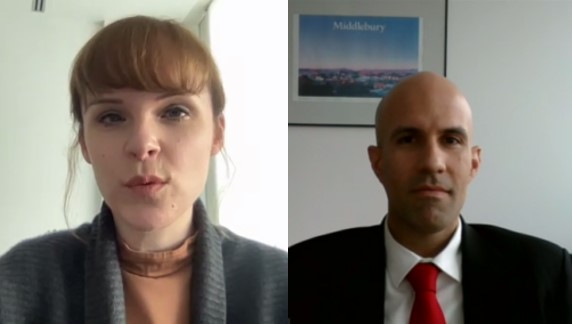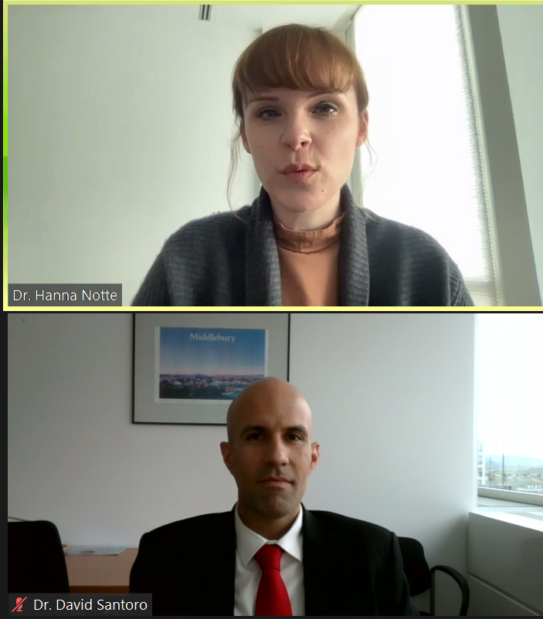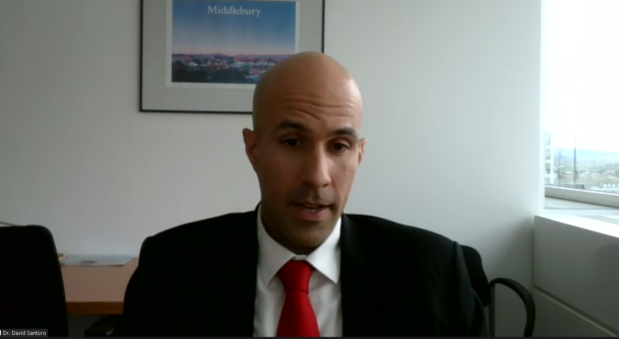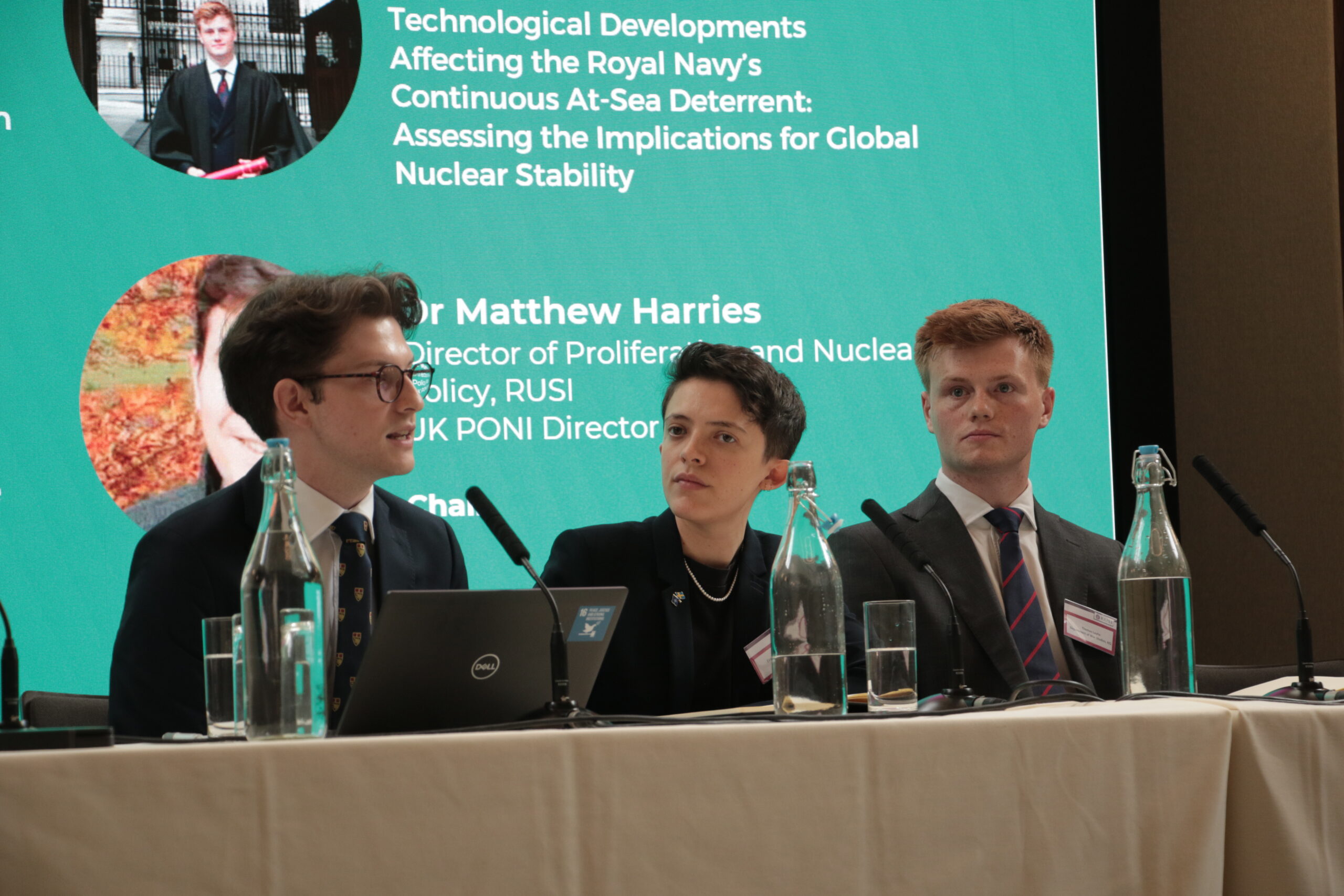
On 7 April 2022, the VCDNP held a virtual event on the future of US-China nuclear relations featuring Dr. David Santoro, President of the Pacific Forum. In conversation with VCDNP Senior Research Associate Dr. Hanna Notte, Mr Santoro presented key findings from his new book US-China Nuclear Relations: The Impact of Strategic Triangles. Mr. Santoro is an expert on deterrence, arms control, and non-proliferation. He leads several track 1.5 and track 2 dialogues, promoting peace and stability in the Indo-Pacific region.

Dr. David Santoro argued that , although China’s nuclear programme has recently taken a backseat in public perception due to the risk of nuclear war with Russia, China remains the primary long-term concern for US strategists, as evidenced during the 2023 US defence budget hearing in the House Armed Services Committee on 5 April 2022.
Analysing a series of strategic triangles involving the US, China, and third actors, Mr Santoro made three key observations:
The following presents Mr Santoro’s observations in more detail.

China’s nuclear build up
While China’s nuclear arsenal used to be small, at a low readiness level, and therefore congruent with statements about its defensive nature, Beijing’s rampant nuclear build up is undermining the status quo.
Though innovations such as road-mobile ICBMs, building a sea-based deterrent, and improved capabilities for penetrating US missile defences point towards China’s ambitions to increase the survivability of its arsenal in case of a nuclear attack, other advances give a different impression.
China’s development of the intermediate-range DF-21D missile, capable of striking moving US warships, and of the long-range DF-26B missile, the integration of its conventional and nuclear missile forces, the inclusion of tactical nuclear weapons in its warfighting strategy, exercises to improve arsenal readiness, and talks among some Chinese strategists about adopting a launch warning posture increase the threat emanating from China’s nuclear weapons.
Despite this, there have been no changes in US posture in direct response to China’s nuclear build up. This is because Washington has been cautious not to lose China’s support in resolving proliferation challenges like Iran and North Korea.
A US-China arms race and the risk of nuclear use
Mr Santoro questioned Chinese claims that its enhanced arsenal will not increase the risk of escalation because of China’s no first use policy. Instead, he predicts that China’s novel nuclear capabilities could trigger an arms race because the US will be incentivised to upgrade its nuclear arsenal to ensure primacy in the Indo-Pacific, not the least with a view of deterring China’s growing conventional forces.
It is important to remember, Mr Santoro emphasised, that armaments by China and the US are also driven by other dynamics, not just by US-China competition. For example, changes in the US posture in response to Russia or North Korea affect US-China strategic stability. The same is true for Chinese reactions to India’s posture. This could additionally fuel a US-China arms race.
The resulting risk of nuclear use is greatest in the scenario of Chinese retaliation to a conventional attack by the US, especially if Beijing sees itself in the disadvantage, Mr Santoro concluded. There is also a moderate risk of unauthorised use of China’s new nuclear capabilities, especially as command and control structures might not be able to keep up with the pace of technological upgrades. Mr Santoro attested a low risk for a pre-emption scenario because China’s nuclear forces are too small to constitute a first-strike capability, and because the US has no interest in nuclear war with China.
Implications for extended deterrence in Asia
Finally, Mr Santoro pointed out that the cost of providing extended deterrence for the US has increased, causing its Indo-Pacific allies to worry about Washington’s resolve to act in a contingency. Consequently, deterring Chinese aggression will become a more collective effort with conventional deterrence playing a central role. The US will call on its allies to share a greater part of the burden, even more so than it has done in previous years.
At the same time, Mr Santoro sees potential for some détente between the US and China in the form of dialogue, confidence-building measures, and arrangements for crisis management, rather than arms control which means formal, verifiable measures to reduce or cap arsenals. The former seems a more feasible option for US-China nuclear relations given the current tensions between them.
Further discussions on US-China nuclear relations
During the discussion that followed, audience members raised questions about avenues for US-China dialogue.
Mr Santoro responded that, although he does not see any room for arms control measures in the near future, US-Chinese engagement on crisis management is a viable option, which enjoys support from several Chinese scholars. A specific focus could be hypersonic capabilities on both sides as they carry a greater risk of inadvertent escalation, which both parties have an inherent desire to prevent.
When asked whether the US would require a larger nuclear arsenal to deter both Russia and China, Mr Santoro responded that he is indeed concerned how the US might react now that it is facing two major nuclear powers for the first time. While it is unlikely that Russia and China will integrate their arsenals or agree on nuclear sharing, the two countries have been cooperating on sensitive security issues since the 2010s. Still, he believed conventional armament to be the more likely reaction from the US.
A recording of the event can be found below.


By continuing to use the site, you agree to the use of cookies. more information
The cookie settings on this website are set to "allow cookies" to give you the best browsing experience possible. If you continue to use this website without changing your cookie settings or you click "Accept" below then you are consenting to this.